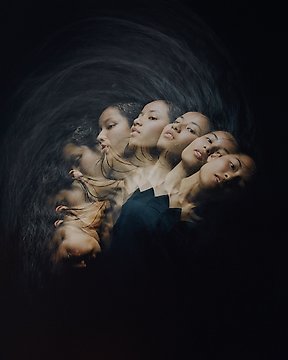Man Ray (1890-1976) - Le violon d'Ingres, 1924
No. 82274875

Edward Weston - Nautilus Shell, 1927
No. 82274875

Edward Weston - Nautilus Shell, 1927
Edward Weston, Nautilus Shell, 1927.
Shells is an example of the ‘pure’ or ‘straight’ style that characterised Weston’s still life photographs. Weston created Shells after his return to America from two extended stays in Mexico between 1923 and 1927. Throughout 1927 he took twenty-six still life images of shells, including Nautilus 1927 (Museum of Modern Art, New York). His interest in nautilus shells was prompted by a 1927 meeting with the Californian painter Henrietta Shore, for whom Weston was a sitter at the time and who often featured shells in her paintings.
Edward Weston © 1971 Doubleday & Company, Inc.
Total dimensions: 35,5 x 27,3 cm.
Fine condition (with small imperfections).
Edward Henry Weston (March 24, 1886 – January 1, 1958) was an American photographer. He has been called "one of the most innovative and influential American photographers" and "one of the masters of 20th century photography".
Edward Weston was founder of the group F/64, in 1932. Made up of a total of seven photographers, among whom Imogen Cunningham and Ansel Adams stand out.
Group f/64 or f.64 was a group founded by seven 20th-century San Francisco Bay Area photographers who shared a common photographic style characterized by sharply focused and carefully framed images seen through a particularly Western (U.S.) viewpoint. In part, they formed in opposition to the pictorialist photographic style that had dominated much of the early 20th century, but moreover, they wanted to promote a new modernist aesthetic that was based on precisely exposed images of natural forms and found objects.
The name of the F/64 group came from the width of the aperture that these photographers usually used, that is, a very closed aperture that allowed great sharpness in the image, as well as a great depth of field. This group was greatly influenced by the photography of the North American Paul Strand, defending pure and clear photography, very much against the pastoralist current. The thinking of the F/64 group was closely linked to the New Objectivity that emerged in Europe at the same time.
The group members were Ansel Adams, Imogen Cunningham, John Paul Edwards, Sonya Noskowiak, Henry Swift, Willard Van Dyke, and Edward Weston.
You might also like
- 16+
This object was featured in
How to buy on Catawiki
1. Discover something special
2. Place the top bid
3. Make a secure payment





